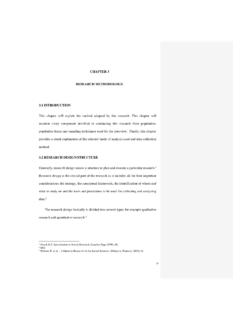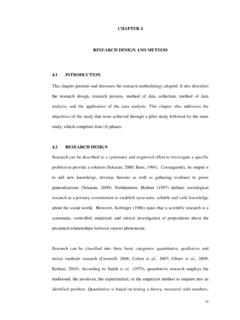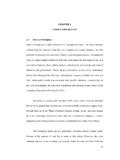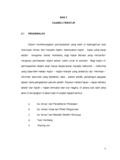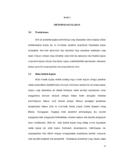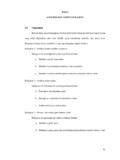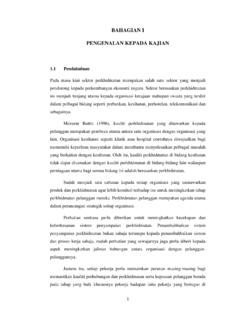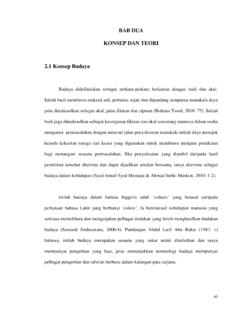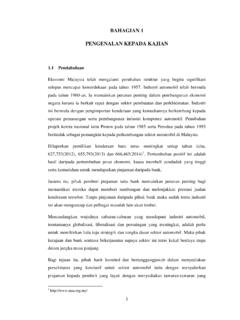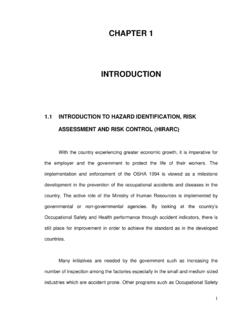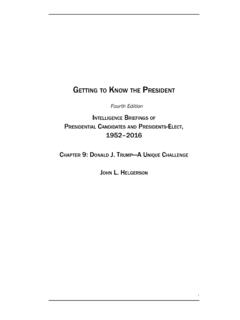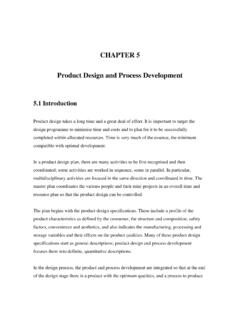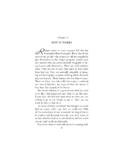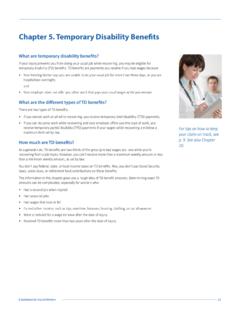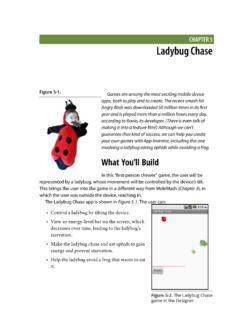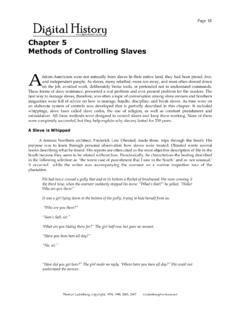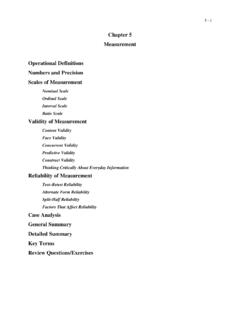Transcription of CHAPTER 5 RESEARCH METHODOLOGY 5.0 Summary
1 CHAPTER 5. RESEARCH METHODOLOGY . Summary This CHAPTER describes the RESEARCH METHODOLOGY used to collect and analyze the data required to address the RESEARCH questions and to test the hypothesized relationships developed in this study. The CHAPTER begins with a discussion of the RESEARCH design, followed by the population from which data will be collected and the approach used in sample selection. The CHAPTER then continues with descriptions of the questionnaire design, data measurement and scaling. Next, the discussion centres on data collection methods, focusing on the mail survey. Finally, the choice methods of data analysis are discussed. RESEARCH Design This RESEARCH applies a quantitative survey METHODOLOGY using self- administered survey questionnaires to collect data from a sample of SMEs involved in internationalization in Malaysia. According to Amaratunga et al. (2002). quantitative methods assist researchers to establish statistical evidence on the strengths of relationships between both exogenous and endogenous constructs.
2 They also argued that the statistical results provide directions of relationships when combined with theory and literature. Furthermore, Cavana (2001) suggested that the 148. quantitative methods can be utilized to verify the hypotheses and provide strong reliability and validity. The key informants in this survey were the owners or the highest ranking officers of the Malaysian SMEs, who were believed to be the most knowledgeable about their firms' characteristics, management style, international operations and firms' performance (Carpano et al., 1994; Roth, 1992; Roth and O'Donnell, 1996). Data collected from this survey were analyzed using structural equation modeling to examine associative relationships among the three main constructs: (1). Determinants of internationalization such as entrepreneurial orientation, global mindset, network relationships and government support; (2) internationalization; and (3) firm performance.
3 Sample Selection Method According to Hair et al. (2007) representative samples are normally obtained by the pursuing a set of well-defined procedures, including: defining the target population; selecting a sampling method; and determining a sample size. Thus, this study used three main procedures for selecting the representative sample as recommended by Hair et al. (2007). 149. Target Population The study's target populations are the SMEs in Malaysia that are involved in internationalization. This RESEARCH explores the three main industries, manufacturing, service and agriculture by focusing on young and established firms, traditional, low- technology and high-technology industries consistent with recommendation in the literature for a greater diversity in the industry scope (Zahra et al., 1999) in the emerging economies. The aim is to assess whether theoretical perspectives developed in mature market contexts are valid in emerging economies and to obtain clear international entrepreneurship patterns and outcomes.
4 This study employs the definition of SMEs provided by the National SME. Development Council (NSDC). Specifically, SMEs in Malaysia are defined as follows: a. Manufacturing sector: Sales turnover of less than RM25 million or full-time employee of less than 150;. b. Services and other sectors: Sales turnover of less than RM5 million or full- time employee of less than 50 (NSDC, 2010). Details of the definitions according to the three categories namely, Micro, Small and Medium, are presented in Table in CHAPTER 3. 150. Following the above definition of SMEs, this study used three main comprehensive source of directories namely, the Federation of Malaysian Manufacturers (FMM), SME Corporation Malaysia (SME Corp. Malaysia), and the Malaysia External Trade Development Corporation (MATRADE) to identify potential respondents of the SMEs in Malaysia that are involved in internationalization. SMEs that are involved in internationalization are defined as for profit companies that engage in exporting, importing, licensing or outsourcing activities, franchising, joint ventures and wholly owned subsidiaries.
5 The percentage of a company's total sales from international operations, the percentage of a company's profit from international operations, the total number of a company's international markets, and the duration of the company's involvement in international operations in 2010 were used as a criterion to screen for firms that qualified for this study. Sampling Method The sampling frame for this study was created based on the three main directories mentioned above that represent SMEs in Malaysia. The sampling frame's specific information comprises the companies' names, factory and office addresses, telephone and fax numbers, types of business, and contact names. 151. Probability sampling is used as the sampling method. In the probability sampling method, stratified random sampling process is used to select the sample. The selection of the sample was based on the criteria explained previously. Stratified random sampling involves a process of stratification or segmentation of SMEs in Malaysia, followed by the random selection of subjects from each stratum.
6 In this study, the population of 3,000 SMEs was segregated based on the combination of criteria explained above. A total of 1,200 SMEs were selected from the total of 3,000 SMEs. The selected 1,200 SMEs were used as the sample in this study. The unit of analysis for this study is the individual SMEs. The respondents (the owners or the highest ranking officer) were identified on the basis of their job title and position within the company (Vida et al., 2000). These people are assumed to be knowledgeable and familiar with their company operations related to the issues under investigation. Sample Size Determination of the sample size is influenced by several factors that must be simultaneously taken into consideration. Among the factors are cost and time constraints, variability of elements in the target population, required estimation 152. precision and whether the findings are to be generalized and , if so, to what degree of confidence (Hair et al.)
7 , 2007). In addition, there is always a trade-off between the cost and time and large sample size. A larger sample size usually involves more expenditure on the collecting and analyzing of data (Henry, 1990). Therefore, this RESEARCH must balance the trade-off of getting a satisfactory sample size within budget and time constraints. Roscoe (1975) suggested that sample sizes larger than 30 and less than 500. are appropriate for most RESEARCH . If samples are to be segregated into subsamples;. (male/female, juniors/seniors, etc.) a minimum sample size of 30 for each category is necessary and in multivariate RESEARCH (including multiple regression analyses), the sample size should be several times (preferably 10 times or more) as large as the number of variables in the study. This suggestion was supported by Stutely (2003). who suggested a minimum number of 30 for statistical analyses. Kent (2001) further suggested that for any kind of quantitative analysis, a minimum of 100 cases was needed.
8 This would assist the researcher in getting a sensible statistical analysis and more significant results. Thus, this study employs a sample size of 1,200 SMEs in Malaysia which is considered sufficient for successful quantitative analysis. 153. Questionnaire Design This section discusses the process of developing the questionnaire for the study. It describes the development of the questionnaire beginning with its forward and back translation, validation of the questionnaire and its pilot testing before the questionnaire is finalized. Questionnaire Development Self-administered questionnaire was used to collect data from the SMEs in Malaysia. The self-administered questionnaire was developed based on the Proposed RESEARCH Model (figure ) in CHAPTER four and on results of semi-structured interviews conducted with five SMEs in Malaysia in June 2011. The questionnaire was developed and presented into four sections containing questions for related constructs.
9 These sections were marked using headings to make it easy for respondents to follow and answer the questions. Section one comprised questions about the respondents' company characteristics, in terms of entrepreneurial orientation (25 items), global mindset (12 items), network relationships (11 items), and government support (12 items). Section two required the respondents to assess the extent of their firms' involvement in internationalization (4 items). Section three comprised questions about firm performance in terms of financial and non-financial performance (14 items) while section four required the respondents to provide 154. general company information in terms of primary business area, annual total sales, number of full-time employees, international business ventures, entry strategy, duration of company experience in current industry, location of head office, form of ownership and business status (9 items).
10 The Likert scale was selected over other scaling methods in this study. The scale is considered the preferred scaling method for obtaining attitudinal information (Fishbein and Ajzen, 1975), with respondents specifying their degree of agreement or disagreement with each statement in the questionnaire. The Likert scale is most suitable for this RESEARCH context because it is a subject-centered scale specially designed to scale respondents, instead of objects (McIver and Carmines, 1981). The advantages of using Likert scales include ease of constructing the questionnaire, ease of understanding the questions and also ease of administration (Malhotra, 2007). Furthermore, Likert scales produce the most information by reducing the amount of leniency (Meric, 1994). A number of researches concerning the optimal number of scale-points, the effects of the number of scale points, and the scales' reliability and validity were conducted in the past (Cicchetti et al.)
